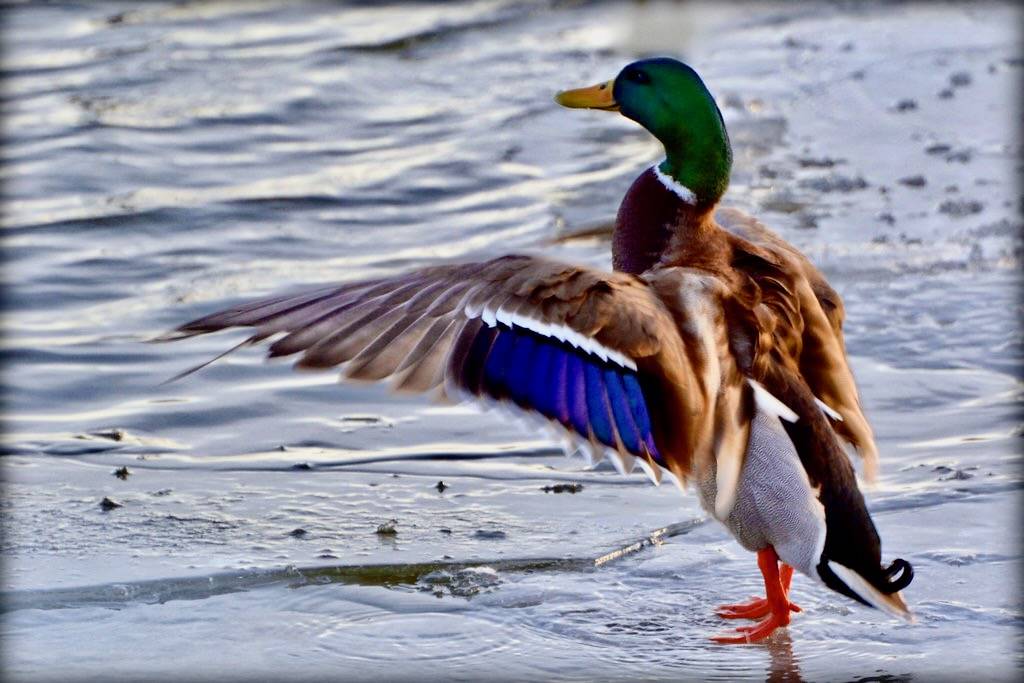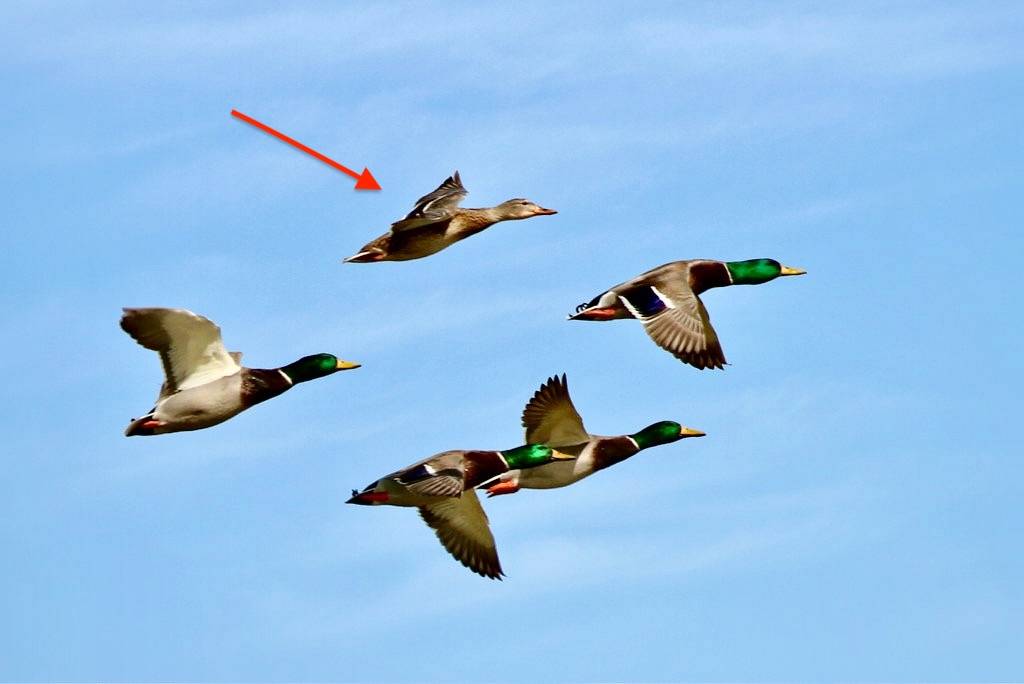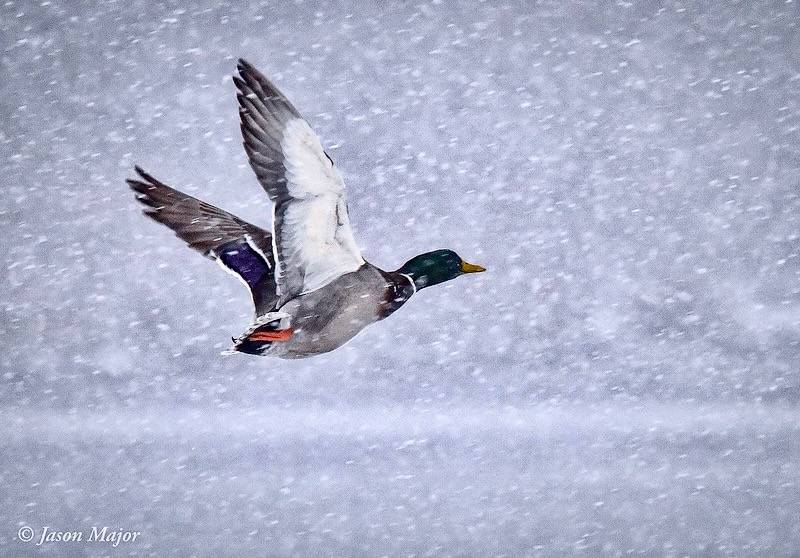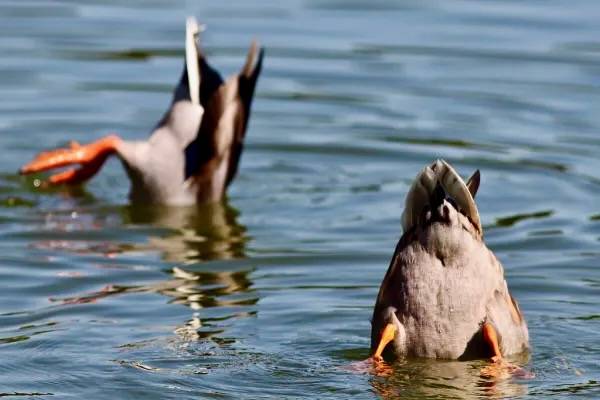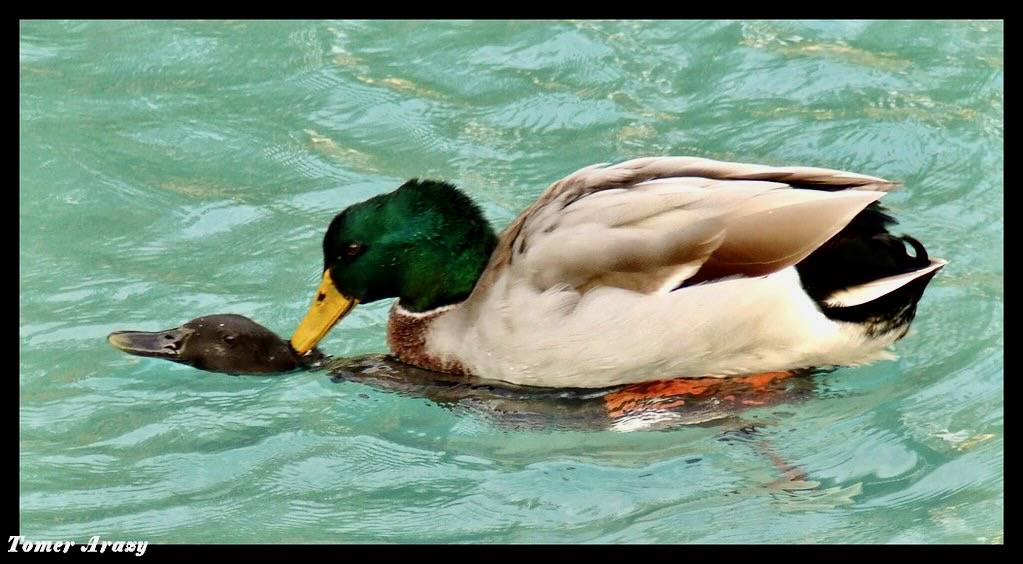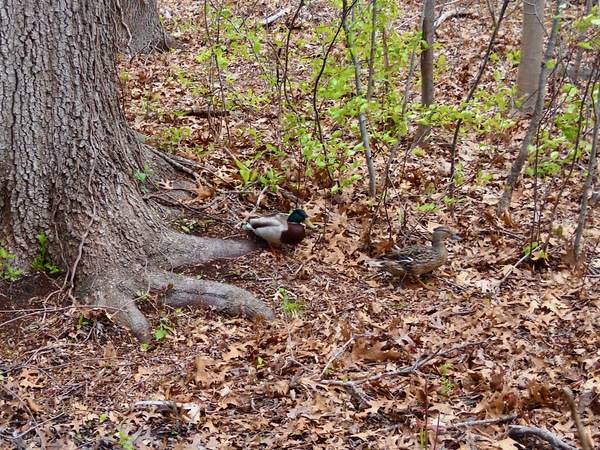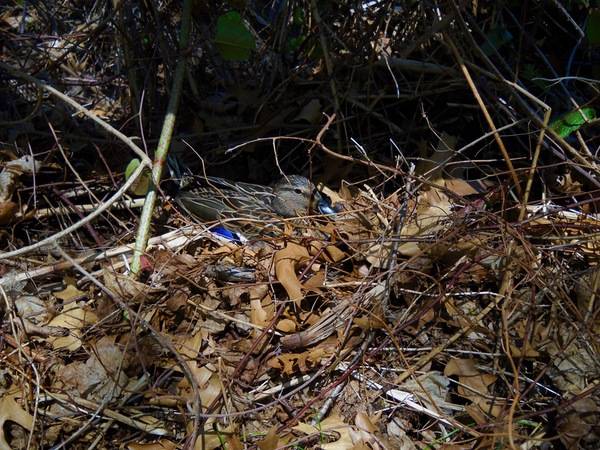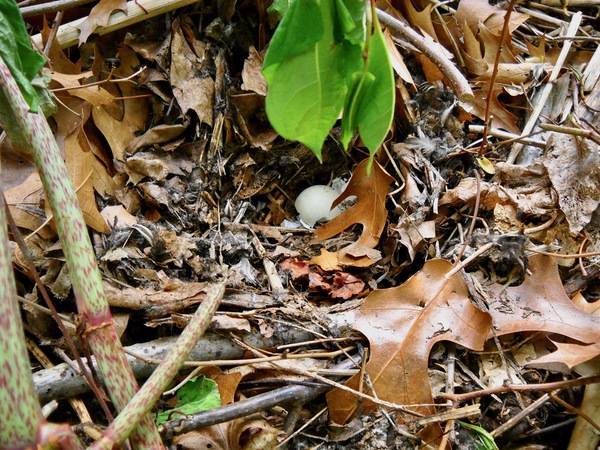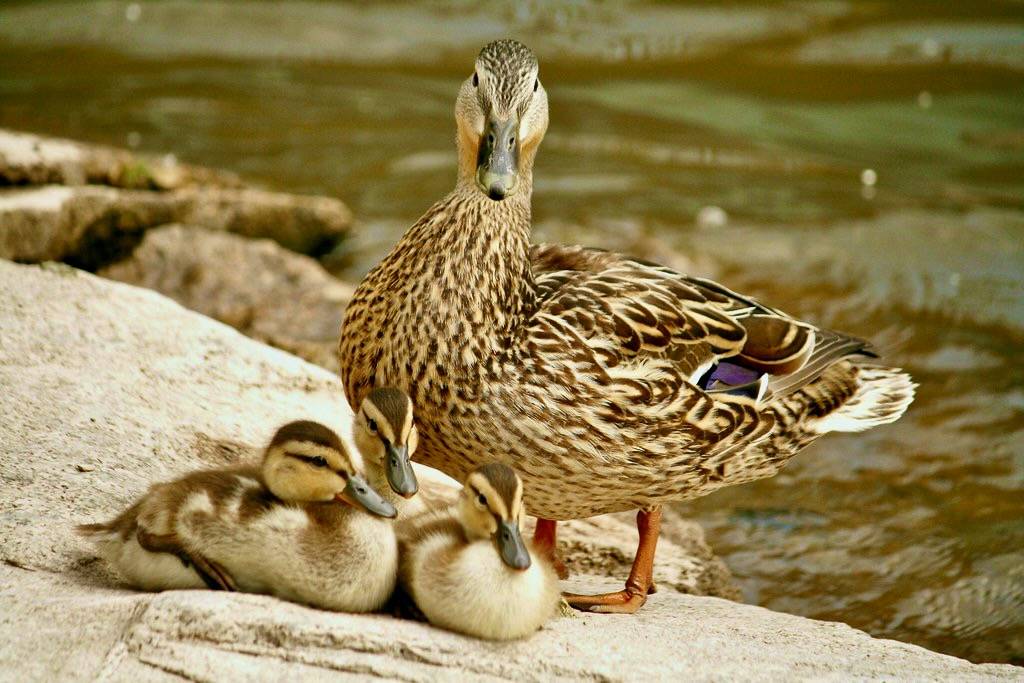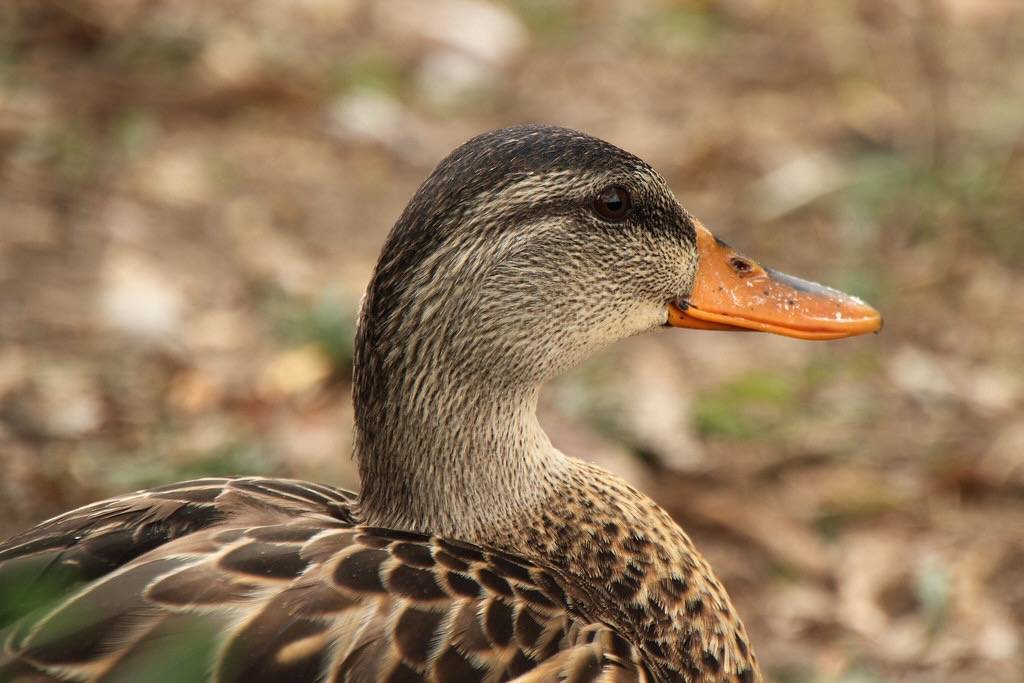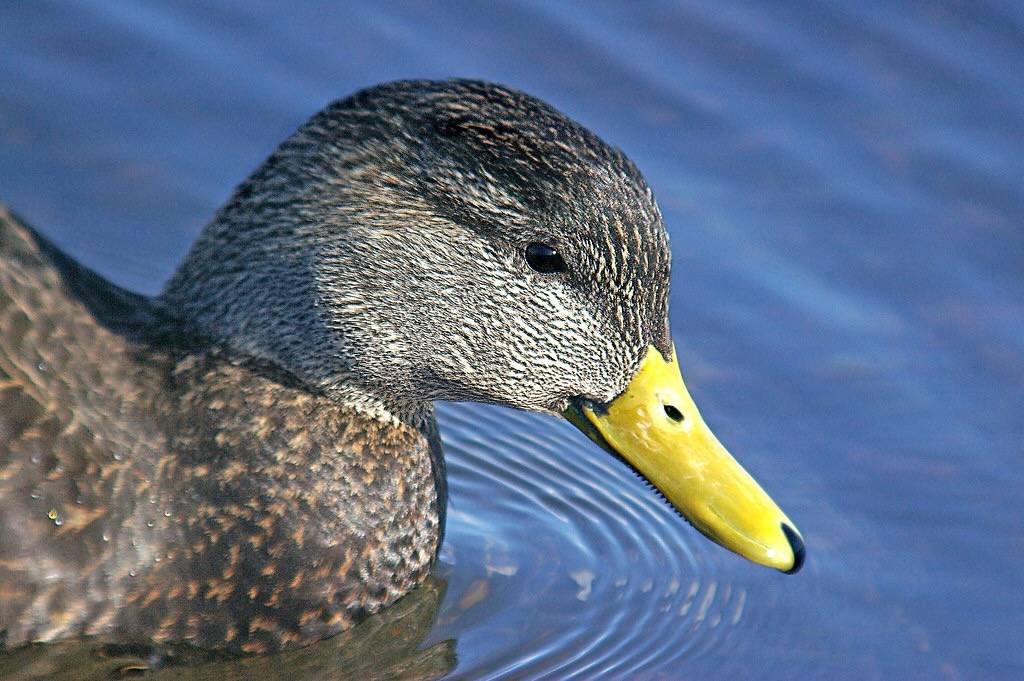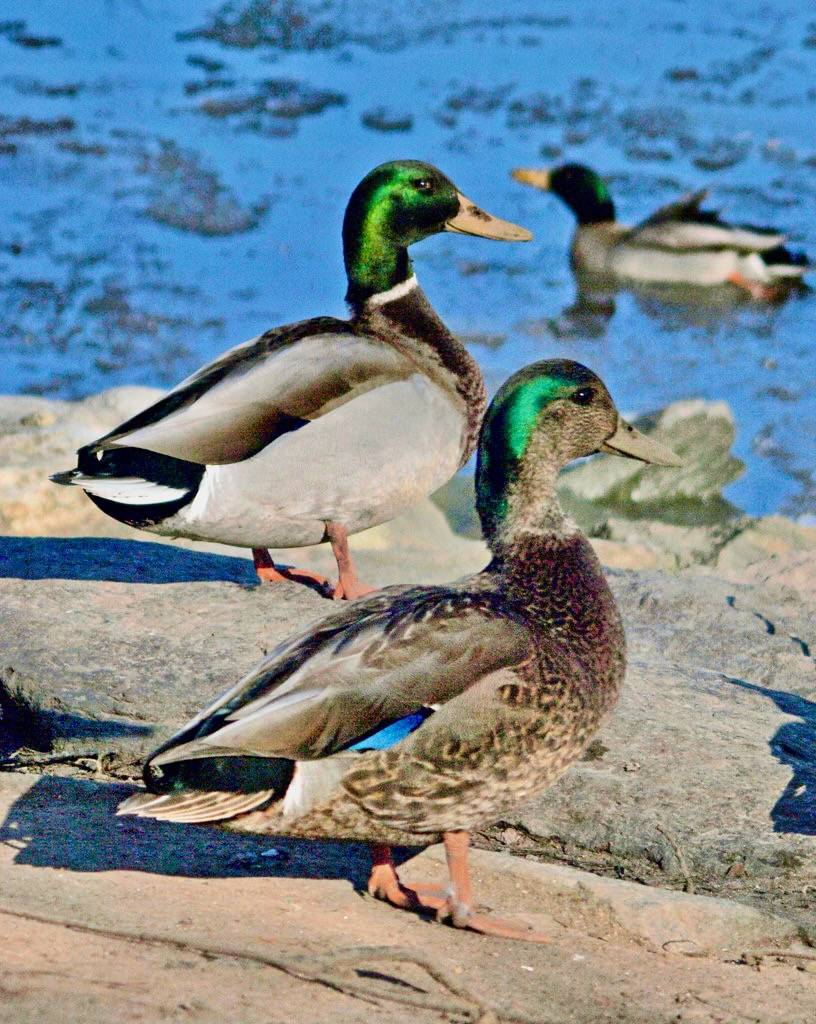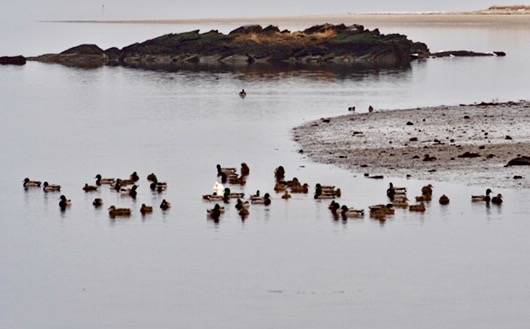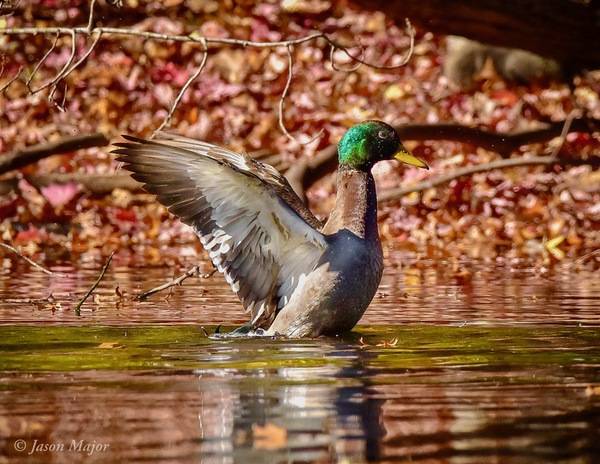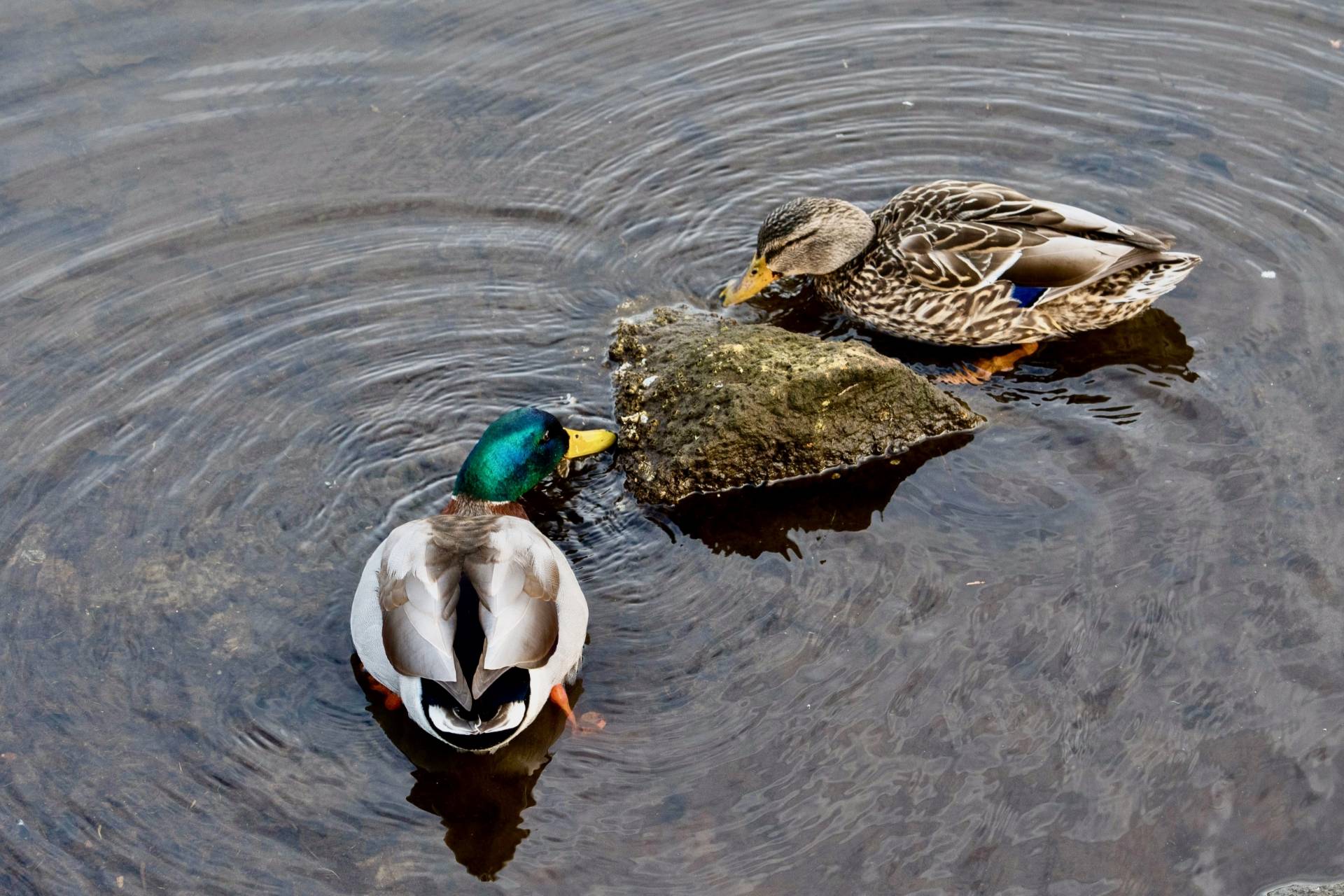Mallard
The Mallard is a dabbling duck that has been recorded throughout the year at Salter Grove. Although normally absent from the open areas of the park, mated pairs lingered on the parking lot lawns when human visitors were few at the start of the Covid-19 pandemic. Both nests and ducklings have been regularly observed during the breeding season. Flocks of up to 50 birds congregate in both North and South Coves during the colder months.
The male is unmistakable with its brilliant green head and neck, and curly black feathers off its white tail. The female has a contrasty speckled-brown plumage, and at a distance might be mistaken for the American Black Duck which has a light gray cheek and a darker brown, less contrasty body.
Like most ducks, Mallards form pairs during the fall and winter when they gather in large flocks. Males that don't manage to get mates will sometimes gang up together to chase an isolated female, pecking at her until she weakens and stops resisting. Each male then copulates with her in turn. Unmated males have even been seen to harass each other in the same way.
The male's interest in his mate ends as soon she starts brooding the eggs. He disappears for over a month to molt the breeding plumage. Luckily, ducklings can feed and move about independently shortly after hatching and only require protection, and being shown what to eat from their mother.
Like other dabblers, the Mallard forages in shallow water for plant roots and tubers. Studies of stomach contents from hunted birds indicate that it consumes mostly plant material. However, it can be considered omnivorous since it has been observed to feed opportunistically on dead salmon and salmon eggs as well as aqutic invertebrates, small fish, insects, worms, and stale bread.
The Mallard is the ancestor of domestic ducks. Its readiness to breed with other species has resulted in many hybrid forms. It frequents both fresh- and salt-water wetland habitats and is native to the Palearctic, Nearctic, and the Oriental regions, as well as North Africa. It has been introduced to New Zealand, Australia, South America, and South Africa where naturalized populations are common. It is so adaptable that it has become an invasive species at some localities.
For more information:
https://www.allaboutbirds.org/guide/Mallard
https://www.audubon.org/field-guide/bird/mallard
https://en.wikipedia.org/wiki/Mallard
http://www.biokids.umich.edu/critters/Anas_platyrhynchos/
https://www.10000birds.com/manky-mallards-domestic-feral-or-just-plain-odd-mallards.htm
https://www.birdsbybent.com/////ch1-10/mallard.htm
https://www.youtube.com/watch?v=HKd1CDiyOGI


